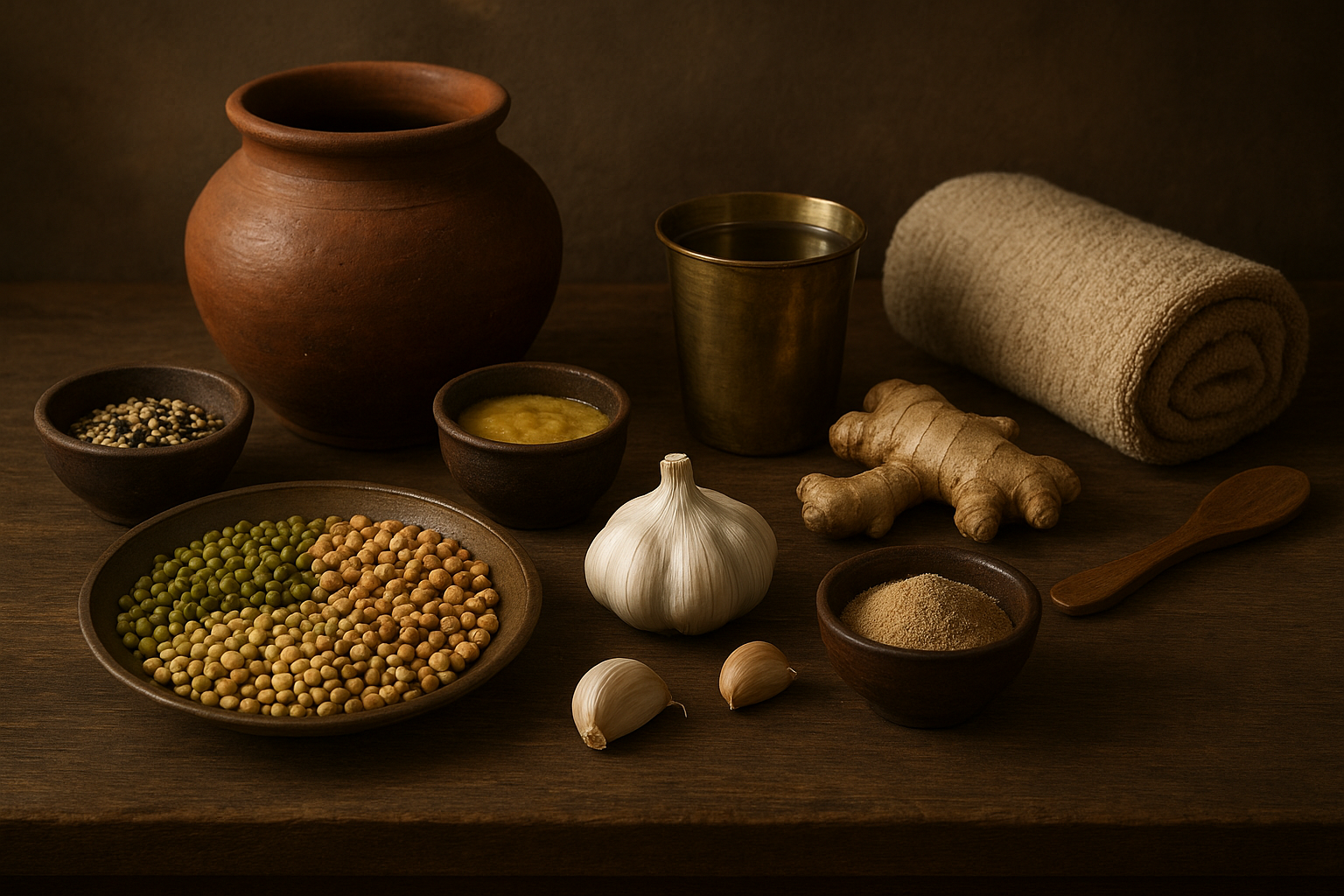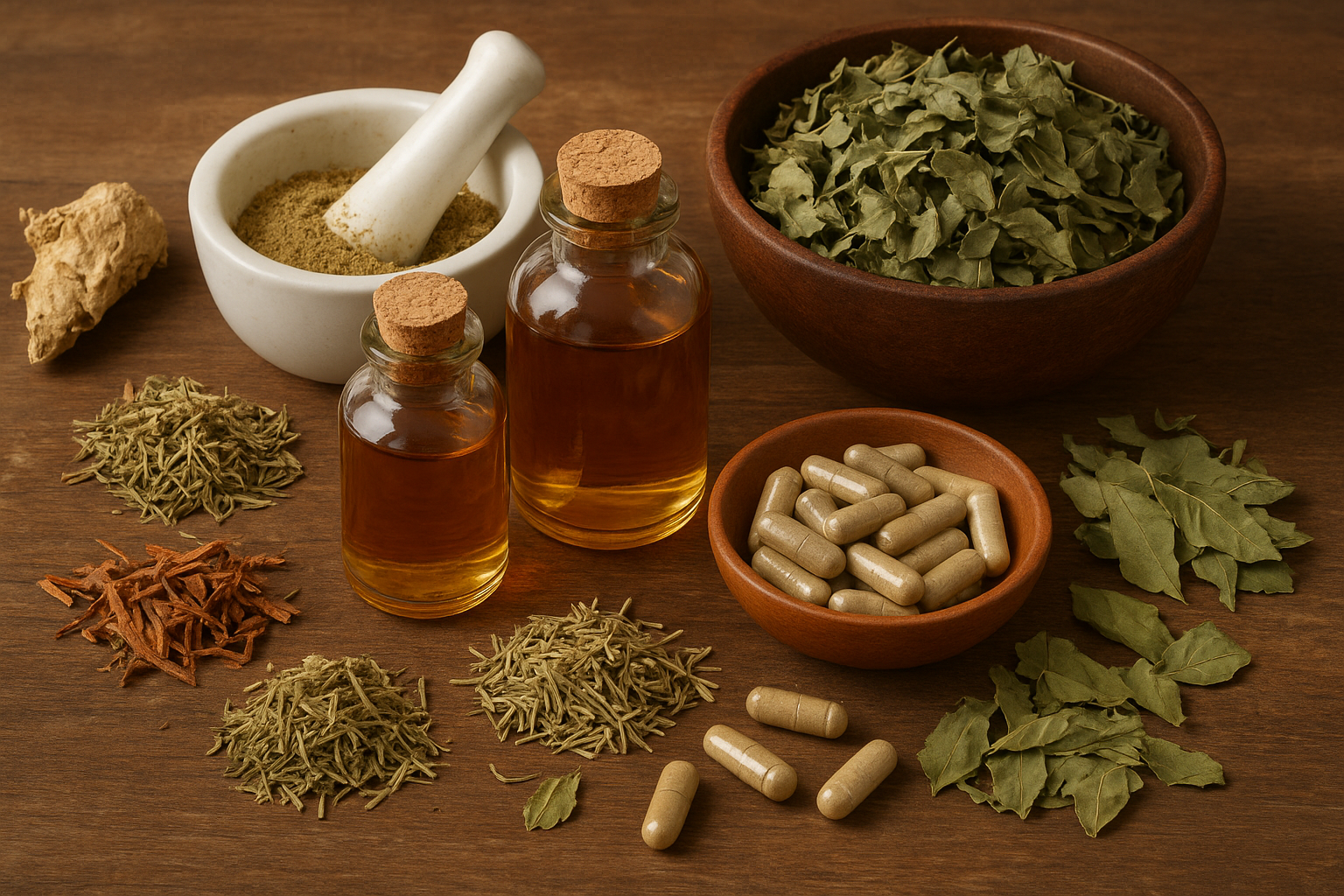MORINGA: THE MIRACLE TREE
Ashish Kumar Yadav, Darshita Rawat, Dr. Kumud Dubey
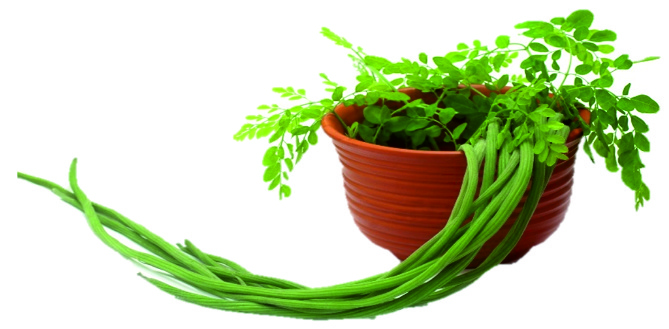
INTRODUCTION: Moringa, scientifically known as Moringa oleifera, is a versatile and nutrient-rich plant that has been recognized for its various health benefits and nutritional value. Native to parts of Africa and Asia, the moringa tree is often referred to as the “drumstick tree,” “miracle tree,” or “tree of life” due to its wide range of uses and nutritional properties. The moringa tree is characterized by its slender, drooping branches, and small, oval-shaped leaves. Almost every part of the moringa tree, including the leaves, pods, seeds, and roots, is edible and has been traditionally used for medicinal and culinary purposes. One of the key features that make moringa highly valued is its exceptional nutritional content. Moringa leaves, for example, are rich in essential nutrients such as vitamins (including vitamin A, C, and E), minerals (like iron, calcium, and potassium), and amino acids. The leaves also contain a variety of antioxidants, which can help combat oxidative stress in the body. Moringa has gained popularity as a superfood due to its potential health benefits, including anti-inflammatory, antioxidant, and antimicrobial properties. It is believed to contribute to various aspects of well-being, such as supporting immune function, promoting healthy skin, and aiding in digestion. In addition to its nutritional value, moringa has been used in traditional medicine for centuries to treat various ailments. Its potential to combat malnutrition and provide essential nutrients has led to its incorporation into nutritional programs in some regions. Moringa’s adaptability to different climates and soil types makes it a hardy and sustainable crop. It is cultivated in various parts of the world, contributing to food security and economic sustainability in many communities.In conclusion, moringa is a remarkable plant known for its nutritional richness, versatility, and potential health benefits. As interest in natural and nutritious foods continues to grow, moringa stands out as a valuable resource for promoting well-being and addressing nutritional needs.
BOTANICAL DESCRIPTION:
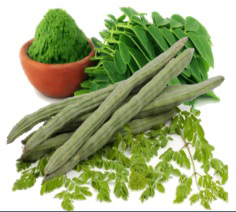
The botanical description of Moringa (Moringa oleifera) provides information about the plant’s physical characteristics, structure, and key features. Here is a detailed botanical description:
Plant Type: Moringa oleifera is a fast-growing, deciduous tree belonging to the family Moringaceae.
Size: Moringa trees can vary in size, typically reaching a height of 10 to 12 meters (30 to 40 feet) at maturity, although they can sometimes grow taller under optimal conditions.
Trunk and Bark: The trunk of Moringa is usually slender, with a rough, corky bark that can be gray or light brown. The bark may have a distinctive pattern of fissures as the tree matures.
Leaves: Moringa leaves are compound, consisting of multiple leaflets arranged on a central stalk. Each leaflet is small, ovate to elliptical in shape, and has a bright green color. The leaves are highly nutritious and are a significant focus of Moringa’s value.
Flowers: Moringa produces fragrant, white to cream-colored flowers with five petals. The flowers are bisexual and are typically arranged in clusters, known as panicles. Flowering can occur throughout the year, depending on environmental conditions.
Fruits (Pods): Moringa pods, also called drumsticks, are long, slender, and cylindrical. The pods can grow up to 30 to 50 cm (12 to 20 inches) in length. They initially have a green color, turning brown as they mature. The pods contain seeds embedded in a fibrous pulp.
Seeds: Moringa seeds are three-sided and can be removed from the pods once they are mature. The seeds are surrounded by a winged shell. Seeds are a valuable part of the plant and are often used for various purposes, including oil extraction and water purification.
Roots: The roots of Moringa are typically shallow and wide-spreading, aiding in the plant’s stability. They can develop a taproot structure as the tree matures.
Growing Conditions: Moringa is well-suited to tropical and subtropical climates. It can thrive in a variety of soil types, including poor and sandy soils, and is known for its drought tolerance. The plant prefers full sunlight for optimal growth.
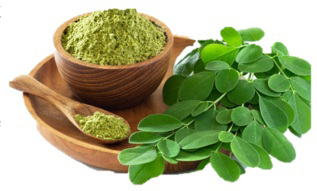
DISTRIBUTION:
Moringa (Moringa oleifera) is native to parts of Africa and Asia, and it has been cultivated and used in these regions for centuries. However, due to its adaptability to various climates and soil conditions, Moringa is now distributed and grown in many tropical and subtropical areas worldwide. The distribution of Moringa is influenced by its ability to thrive in diverse environments, making it a resilient and versatile plant.

Key regions where Moringa is commonly found or cultivated include:
1. Sub-Saharan Africa: Moringa is native to parts of West and East Africa, and it has a long history of traditional use in countries such as Nigeria, Ghana, Senegal, and Ethiopia.
2. South Asia: Moringa is native to the Indian subcontinent, and it is widely cultivated in countries like India, Sri Lanka, Pakistan, and Bangladesh.
3. Southeast Asia: Moringa is grown in various countries in Southeast Asia, including the Philippines, Cambodia, Vietnam, Thailand, and Indonesia.
4. Central and South America: Moringa has been introduced and cultivated in countries across Central and South America, including Mexico, Nicaragua, Peru, and Brazil.
5. Caribbean: Moringa is also found in some Caribbean countries, where it is cultivated for its nutritional and medicinal properties.
6. Middle East: Moringa is grown in parts of the Middle East, including Egypt and Yemen.
7. United States and Europe: In recent years, Moringa has gained popularity in the United States and Europe, where it is often grown for its nutritional value and marketed as a superfood.
The adaptability of Moringa to a variety of climates, from arid to humid, and its resistance to drought make it suitable for cultivation in diverse geographical locations. Its ability to thrive in challenging conditions has contributed to its increasing presence in different parts of the world. Additionally, Moringa is often used for reforestation efforts and as a sustainable crop in agroforestry systems, further extending its distribution.
HISTORICAL AND CULTURAL SIGNIFICANCE:
The historical and cultural significance of Moringa (Moringa oleifera) is deeply rooted in various societies, where it has been valued for its diverse uses and contributions to daily life. Here are some aspects of Moringa’s historical and cultural significance:
1. Traditional Medicine: – Moringa has a long history of use in traditional medicine systems across Africa, Asia, and other regions. Its leaves, roots, seeds, and flowers have been utilized to treat a variety of ailments, including digestive disorders, skin conditions, and infections.
2. Nutritional Supplement:- In many cultures, Moringa has been a vital nutritional supplement, especially during times of scarcity or food shortages. The leaves, rich in essential vitamins and minerals, have been consumed to address malnutrition and enhance overall well-being.
3. Culinary Uses:- Moringa is integrated into the culinary practices of numerous cultures. The leaves, flowers, and pods are used in various dishes, adding nutritional value and a unique flavor to soups, stews, curries, salads, and more.
4. Religious and Cultural Symbolism:- In some cultures, Moringa holds religious or cultural significance. It may be regarded as a symbol of health, prosperity, or even spirituality. The plant’s versatility and ability to thrive in diverse conditions contribute to its symbolic importance.
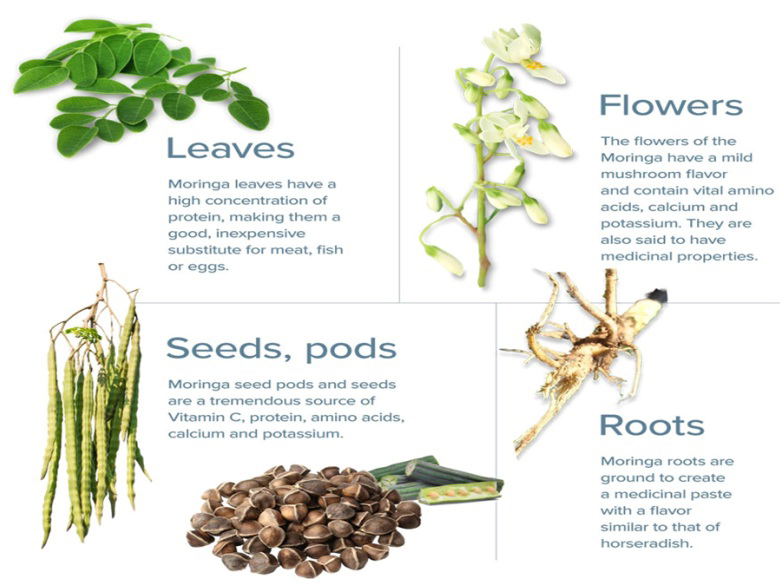
5. Water Purification: – Moringa seeds are known for their water-purifying properties. Crushed seeds can be used to clarify and purify water by causing impurities to settle, making it a valuable resource in communities facing waterborne diseases.
6. Agricultural Practices: – Moringa has been incorporated into traditional agricultural practices. Its ability to improve soil fertility and resist pests makes it a beneficial companion plant in agroforestry systems. Additionally, the leaves can be used as green manure.
7. Economic Importance: The economic significance of Moringa is evident in its various commercial applications. The plant’s seeds are a source of high-quality oil used in cosmetics, culinary applications, and biodiesel production. Moringa products, such as supplements and powders, have gained popularity in health and wellness markets.
8. Reforestation and Erosion Control: –Moringa’s rapid growth and adaptability make it valuable in reforestation efforts. Its extensive root system helps prevent soil erosion, making it useful in combating desertification and land degradation.
9. Global Spread and Exchange: – Moringa’s historical significance extends to its role in global exchange and migration. As a plant native to South Asia, it has traveled across continents through trade routes and migration, influencing various cultures along the way.
NUTRITIONAL CONTENT:
Moringa (Moringa oleifera) is highly valued for its exceptional nutritional content. Various parts of the Moringa plant, including the leaves, seeds, and pods, offer a rich array of essential vitamins, minerals, proteins, and antioxidants. Here is an overview of the nutritional content of different parts of the Moringa plant:

1. Moringa Leaves:
Vitamins: Rich in vitamin A, vitamin C, and various B vitamins (B1, B2, B3, B6, B9).
Minerals: Excellent source of minerals such as calcium, potassium, iron, magnesium, phosphorus, and zinc.
Proteins: High-quality protein with all the essential amino acids, making it a valuable source for vegetarians and vegans.
Antioxidants: Contains a range of antioxidants, including quercetin, chlorogenic acid, and beta-carotene.
2. Moringa Seeds:
Fats: Contain healthy monounsaturated fats and polyunsaturated fats.
Proteins: Provide a good source of protein, including the amino acid methionine.
Antioxidants: Seeds contain antioxidants that contribute to their health benefits.
3. Moringa Pods (Drumsticks):
Vitamins: Good source of vitamin C and vitamin A.
Minerals: Provide minerals such as calcium, potassium, and iron.
Fiber: Drumsticks are a good source of dietary fiber.
4. Moringa Flowers:
Antioxidants: The flowers contain antioxidants that contribute to the overall health benefits of the plant.
Nutrients: While not as commonly consumed as leaves, flowers also contain certain nutrients.
5. Moringa Oil:
Fats: Moringa oil, extracted from the seeds, is rich in monounsaturated fats and has a high smoke point, making it suitable for cooking.
Antioxidants: The oil contains antioxidants that contribute to its stability and potential health benefits.
HEALTH BENEFITS:
Moringa (Moringa oleifera) is often praised for its numerous health benefits due to its rich nutritional content and potential medicinal properties. While individual responses to Moringa can vary, here are some commonly reported health benefits associated with its consumption:
1. Nutrient-Rich Superfood: – Moringa is a nutrient-dense food, containing a variety of vitamins, minerals, and proteins. It is particularly rich in vitamin A, vitamin C, calcium, potassium, iron, and essential amino acids.
2. Antioxidant Properties: – Moringa is known to be a potent source of antioxidants, including quercetin, chlorogenic acid, and beta-carotene. Antioxidants help neutralize free radicals in the body, potentially reducing oxidative stress and inflammation.
3. Anti-Inflammatory Effects:- Some studies suggest that Moringa may have anti-inflammatory properties, which could be beneficial for individuals dealing with inflammatory conditions or chronic inflammation.
4. Lowering Blood Sugar Levels: – There is evidence to suggest that Moringa may help regulate blood sugar levels, making it potentially beneficial for individuals with diabetes. It may help improve insulin sensitivity.
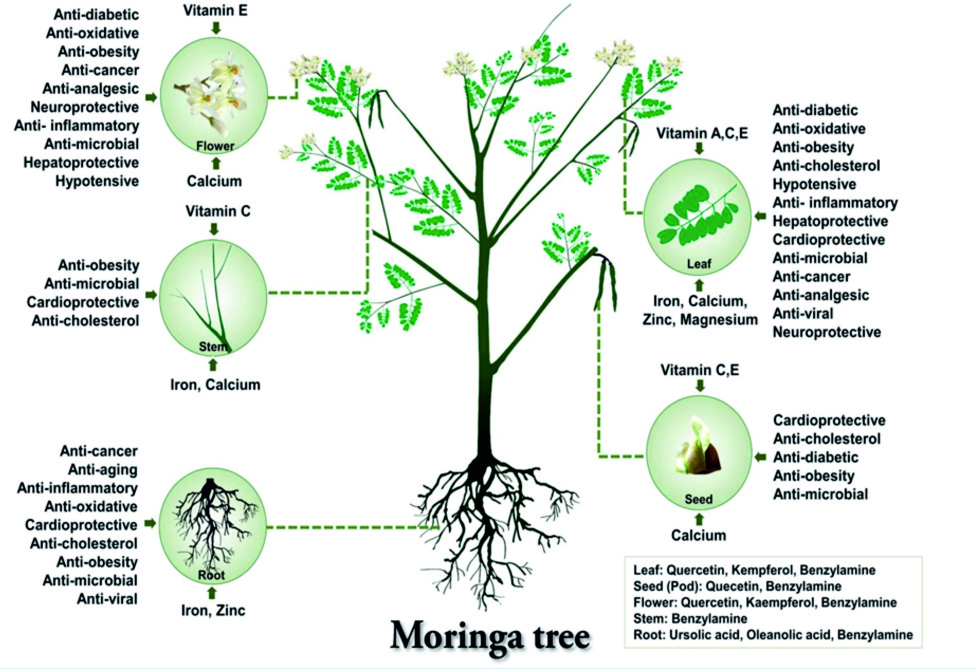
5. Lowering Cholesterol:- Moringa has been studied for its potential cholesterol-lowering effects. Some research suggests that it may help reduce levels of bad cholesterol (LDL) while increasing good cholesterol (HDL).
6. Blood Pressure Regulation: – The potassium content in Moringa may contribute to blood pressure regulation. Adequate potassium intake is associated with lower blood pressure levels.
7. Improved Digestive Health: – Moringa leaves and pods contain fiber, which is essential for digestive health. Fiber can aid in regular bowel movements and may help prevent constipation.
8. Anti-Microbial Properties:- Moringa has demonstrated antimicrobial and antibacterial properties in some studies. This may be beneficial in supporting the body’s immune system and fighting against certain infections.
9. Support for Anemia: – Moringa is a good source of iron, which is important for preventing and addressing iron-deficiency anemia. The iron in Moringa is non-heme iron, which is more easily absorbed when combined with vitamin C-rich foods.
10. Joint Health:- Some studies suggest that Moringa may have potential benefits for joint health, possibly due to its anti-inflammatory properties.
11. Support for Breastfeeding Mothers:- Moringa is traditionally believed to help support lactating mothers by increasing breast milk production. However, more research is needed to confirm this effect.
MORINGA AS AGROFORESTRY SPECIES:
Moringa oleifera is a versatile and valuable agroforestry species that holds significant importance in sustainable agricultural practices. Here are several reasons why Moringa oleifera is considered an excellent choice for agroforestry:
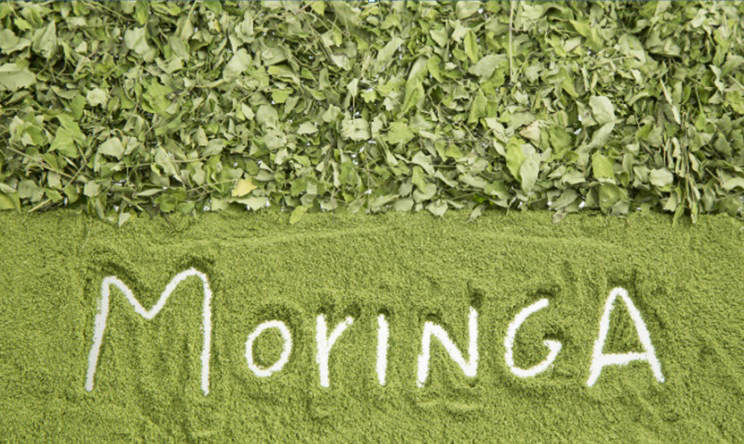
Nutrient-Rich Leaves: Moringa leaves are highly nutritious, containing essential vitamins and minerals. They can serve as a valuable fodder for livestock, providing a rich source of protein, vitamins (such as vitamin C and A), and minerals (like iron and potassium).
Fast Growth: Moringa is known for its rapid growth, allowing farmers to quickly establish a source of green biomass for various purposes. The fast growth also makes it suitable for intercropping or as a quick-growing cover crop to protect the soil.
Drought Tolerance: Moringa is well-adapted to arid and semi-arid conditions, making it a resilient option for regions with limited water resources. Its ability to thrive in dry conditions enhances its suitability for agroforestry in areas prone to drought.
Soil Improvement: Moringa has a deep taproot system that helps in nutrient mining from the subsoil. The fallen leaves from the tree act as a natural mulch, contributing to soil fertility and preventing soil erosion.
Medicinal Properties: Moringa oleifera has various medicinal properties and is traditionally used for its healing benefits. Integrating Moringa into agroforestry systems not only provides economic benefits but also promotes health and wellness within local communities.
Biodiversity Support: The presence of Moringa in agroforestry systems can enhance biodiversity by attracting beneficial insects and serving as habitat for various organisms. This contributes to a more balanced and sustainable ecosystem.
Oilseed Production: Moringa seeds are a rich source of oil, which can be used for cooking, cosmetics, and even as a biodiesel feedstock. The oil extraction process can provide an additional income stream for farmers.
Livelihood Diversification: Moringa cultivation provides an opportunity for farmers to diversify their income sources. The various products derived from Moringa, including leaves, seeds, and oil, can be sold in local and international markets.
Carbon Sequestration: Like other trees, Moringa contributes to carbon sequestration, helping mitigate climate change by absorbing and storing carbon dioxide from the atmosphere.
Low Maintenance: Moringa is relatively low- maintenance and can thrive with minimal care once established, making it a suitable choice for agroforestry systems where labor and resources may be limited.



Project Fellow
Research Scholar
Senior Scientist
Indian Council of Forestry Research and Education
Eco- Rehabilitatior, Centre
(ICFRE-ERC), Prayagraj, UP





